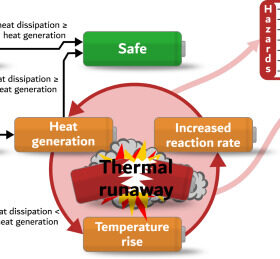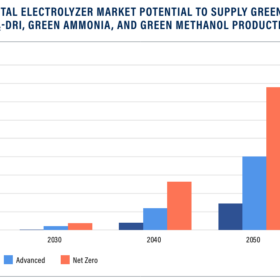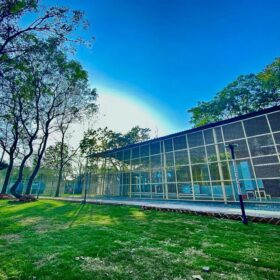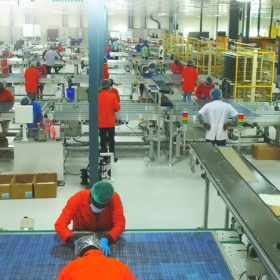New Delhi based Asun Trackers, with the help of The Indian Institute of Technology Delhi (IIT Delhi), has developed a two-axis solar tracker that offers yield increase of more than two times over single-axis trackers, which compares well with that of a dual-axis design but at a significantly lower capital cost.
The two-axis tracker showed an exponential yield of 20% over the fixed-tilt, against an incremental yield of just 5% with single-axis tracker, in an analysis of the real-time data collected for the crucial periods (winter solstice and equinox period) from a single location.
Notably, dual-axis trackers have failed to find a foothold in the Indian market because of their heavy structure and high capital cost. The developers want a solar tracker that can give them the performance of a dual-axis tracker at the cost of a single-axis tracker.
The live yield data collected by Asun Trackers team from a location close to Roorkee in northern India showed the negative yield of single-axis tracker over fixed-tilt during winter solstice and equinox periods.
Varun Sachar, managing director, Asun Trackers told pv magazine: “This is a dangerous situation for any developer when the yield is negative or at par in majority months of the year.”
“Ideally, the yield from the tracker should be positive during all seasons of the year. It should not give negative or less yield during winter solstice period or during vernal and autumnal equinoxes in any location on the globe. The tracker should help the developer to improve their internal rate of return (IRR). Higher terrain adaptability, self-lubricating bearings to minimize the maintenance cost, modular design for easy installation, decentralized arrays and compliance to wind safety norms are some other desired characteristics,” he added.
The two-axis tracker developed by Asun Trackers addresses the shortcomings of the single-axis tracker design by providing continuous seasonal movement along the north-south axis, in addition to daily east-west movement, thus tracking the sun optimally at all times.
Further, its modular and de-centralized design optimizes the structure weight, leading to a direct reduction in capital cost while offering a higher availability than single- or dual-axis designs.
With 20 + degrees adaptability, Asun two-axis tracker in principle can be deployed in undulating terrain as well. Use of self-lubricating polymer bearings eliminates the need for lubrication while extending the life of moving parts.
The Asun Trackers team intends to pitch the solution to those developers who are already considering either a single-axis tracker or a fixed-tilt installation with seasonal tilt. “In both these scenarios, we are prepared to present project economics from an IRR perspective backed with site-specific simulated yield analysis,” said Varun Sachar.
This content is protected by copyright and may not be reused. If you want to cooperate with us and would like to reuse some of our content, please contact: editors@pv-magazine.com.







By submitting this form you agree to pv magazine using your data for the purposes of publishing your comment.
Your personal data will only be disclosed or otherwise transmitted to third parties for the purposes of spam filtering or if this is necessary for technical maintenance of the website. Any other transfer to third parties will not take place unless this is justified on the basis of applicable data protection regulations or if pv magazine is legally obliged to do so.
You may revoke this consent at any time with effect for the future, in which case your personal data will be deleted immediately. Otherwise, your data will be deleted if pv magazine has processed your request or the purpose of data storage is fulfilled.
Further information on data privacy can be found in our Data Protection Policy.